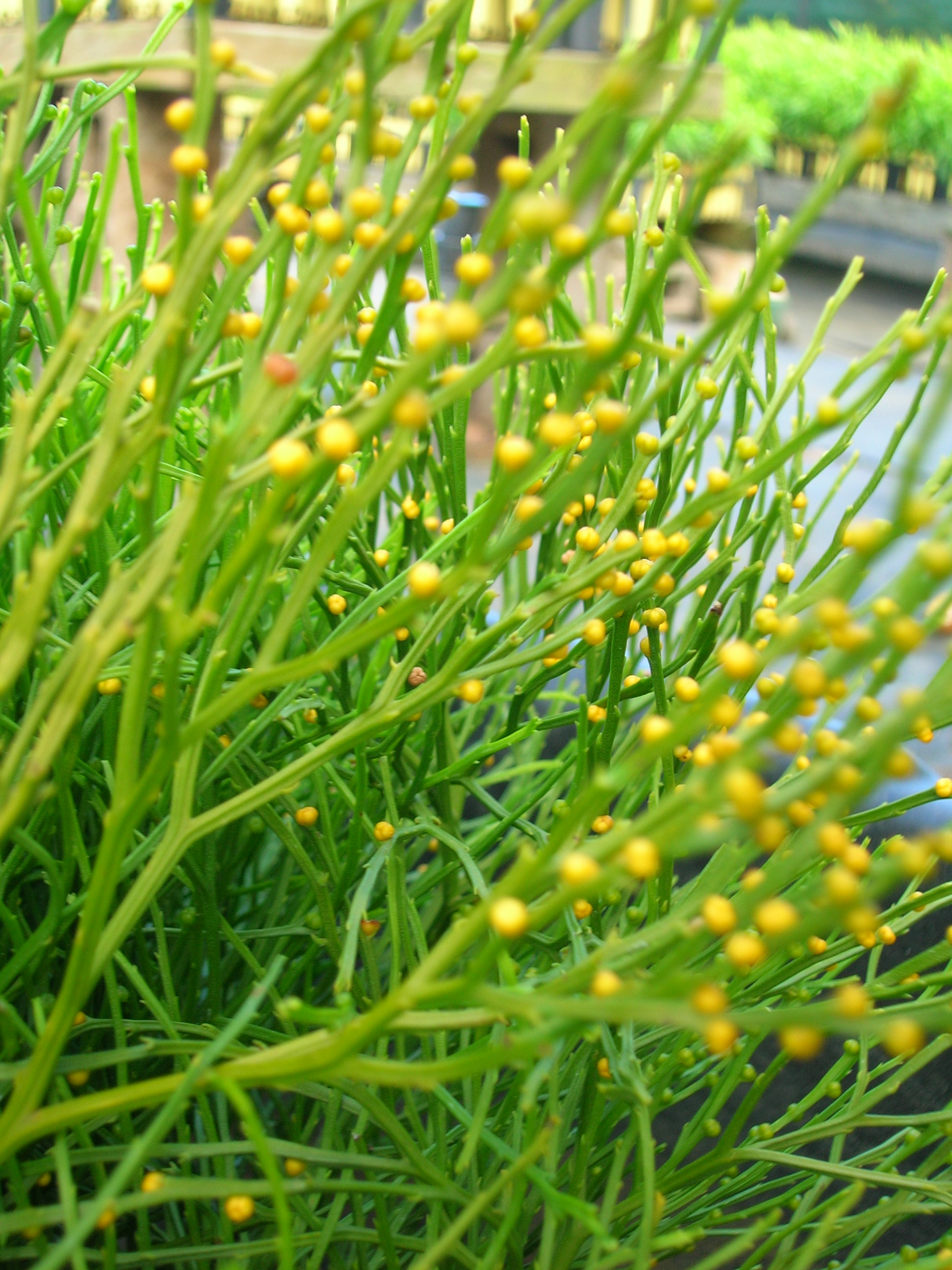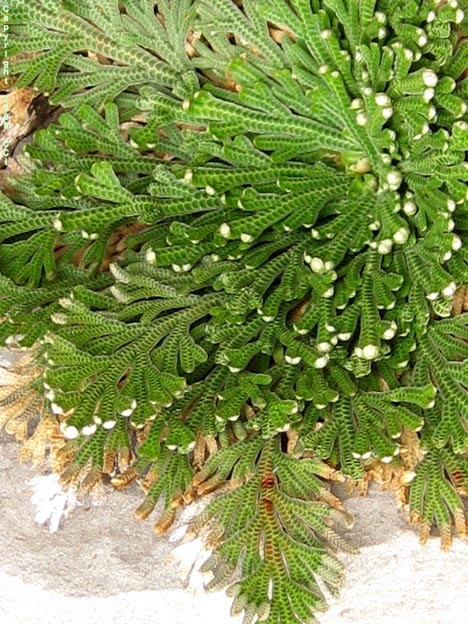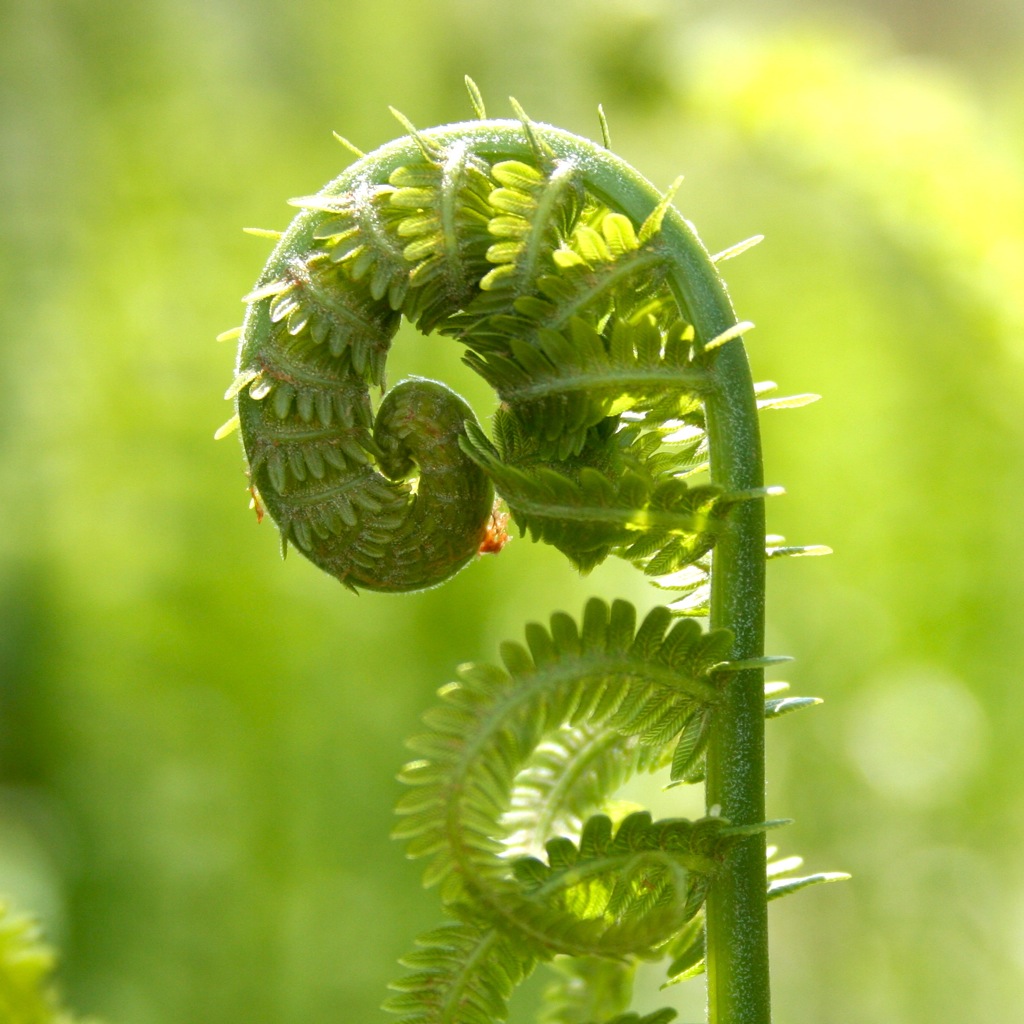Pteridophytes are vascular plants and have leaves (known as fronds), roots and sometimes true stems, and tree ferns have full trunks. Examples include ferns, horsetails and club-mosses. Fronds in the largest species of ferns can reach some six metres in length!
Many ferns from tropical rain forests are epiphytes, which means they only grow on other plant species; their water comes from the damp air or from rainfall running down branches and tree trunks. There are also some purely aquatic ferns such as water fern or water velvet (Salvinia molesta) and mosquito ferns (Azolla species).
Pteridophytes do not have seeds or flowers either, instead they also reproduce via spores.
There are around 13,000 species of Pteridophytes.
The four divisions of living seedless vascular plants are distinguished by both sporophytic and gametophytic features; significant variation exists among their branching patterns, leaf morphology, vascular organization, and underground absorptive organs. The types and arrangements of sporangia on the sporophyte can also be used in defining divisions. Gametophytes vary in the origin from different spore types and in their sources of nutrition. No single characteristic defines each division; rather, classification depends on set of features.

Mosses are remarkably successful plants that thrive alongside more conspicuous vascular plants. The approximately 12,000 species of mosses make up the largest and most familiar group of bryophytes.
The Psilophyta are the simplest vascular plants, primarily because they have no roots and most species have no obvious leaves. Instead of roots with root hairs, the psilophytes have rhizomes with absorptive rhizoids. The name whisk ferns for this group comes from the highly branched stems of Psilotum, which give the plant appearance of a whisk broom. Psilotum is widespread in subtropical regions of the southern United States and Asia, and it is popular and easily cultivated plant that is grown in greenhouses worldwide.

The Division Lycopodophyta consists of 10 to 15 genera and more than 1,100 species that live in various habitats worldwide. They are primarily tropical but also form of conspicuous part of the flora in temperate regions. Most of the species are included in two genera, the club mosses (Lycopodium, about 400 species) and the spike mosses (Selaginella, about 700 species), both of which get their common names from their club-shaped or spike-shaped strobili. Most species are terrestrial, but many are epiphytic. One species of Selaginella, called the resurrection plant (S. lepidophylla) because of its ability to defy drought conditions, occurs in the deserts of southwestern United States and Mexico. During periods of drought, this plant forms a tight, dried-up ball; when rain comes, its branches expand and come alive again with photosynthetic activity.

Equisetum is the only living genus of the Equisetophyta. Some of the fifteen species of Equisetum have branched stems and some have unbranched stems. Equisetum species are called horsetails or scouring rushes, the latter because their epidermal tissue contains abrasive particles of silica. Scouring rushes were used by Native Americans to polish bows and arrows and by early colonists and pioneers to scrub their pots and pans. Equisetum occurs worldwide in moist habitats along streams or forest edges. Its rhizomes are highly branched and perennial. Because its rhizomes can grow rapidly and its aerial stems are poisonous to livestock, Equisetum can be a serious problem for farmers and ranchers. Gardeners have often chopped up the rhizome while trying to remove it from soil, only to have new plants arise from each of the fragments left behind.

Ferns include approximately 12,000 living species, making this division by far the largest among the seedless vascular plants. Ferns are primarily tropical plants, but some species inhabit temperate regions, and some even live in deserts. North or south of the tropics, the abundance of ferns decreases because of decreasing moisture.
The most conspicuous parts of a fern are its leaves, or fronds. New leaves grow from a fleshy, siphonostelic or eustelic rhizome each year. Early leaves are lopsided because they grow faster on tehir lower surface than on their upper surface. This growth pattern, which is called circinate vernation, produces young leaves that are coiled into “fiddleheads.”